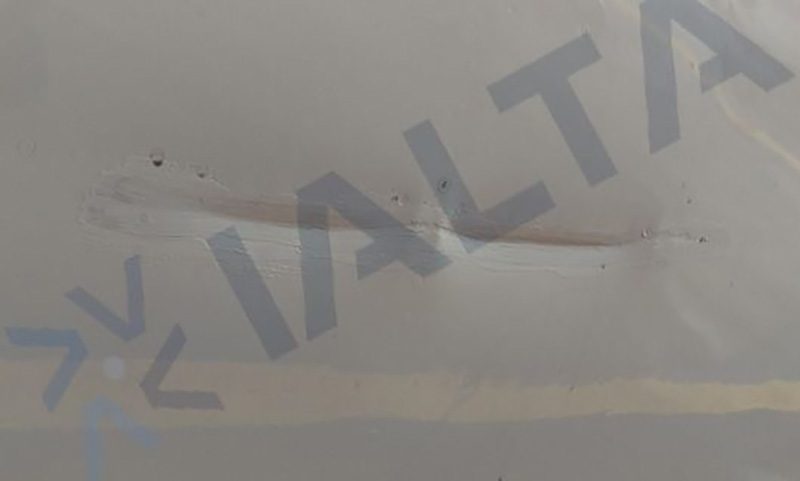Damage on an aircraft will be assessed and then can end up with one of two different requirements:
Damage requiring a physical repair or Damage not requiring a physical repair.
There are times when damage may transition from not requiring a physical repair to requiring one – for example it might be acceptable to fly for a limited number of cycles/flight hours with the existing damage, but at that stage it will require a physical repair.
To consider damage that does not have a physical repair we can follow through some simple steps:
Look at the damage type and confirm it is recorded accurately (dent, scratch, etc – the definitions will be in your structural manual for the aircraft as a reference).
Check the damage description and consider the location the damage is accurate – this must be correctly recorded.
Look at the noted dimensions for the damage ensuring these reflect what you have physically on the aircraft; this is very important as the acceptance of damage is heavily based on such dimensions – (length, width, depth, dimensions to other critical points such as sensors or edge cut-outs).
Confirm any calculations carried out such as length/depth are correct and ensure that the required dimensions are noted. Some assessments might require additional dimensions or considerations dependent on location.
Now we consider the documentation the damage was reviewed with – ensure you have the revision and or revision date for this and make sure it is an effective repair for the aircraft.
All corrective actions must be carried out for the repair to be effective (for example NDT – Non-Destructive Testing). Repairs & their requirements can change over time and so revision status is critical in any consideration.
Are any repeat inspections required following the assessment or has a repair category been assigned which differs from the standard inspection requirements – these should be implemented into the maintenance programme and evidenced as required for the repair to be acceptable.
Is there any additional damage within the vicinity of the repair – this could affect the damage depending on location and aircraft, review documentation to ensure it remains acceptable.
Remember additional considerations are given when damage is close to different parts of the aircraft such as lap joints, butt joins, sensors, cut-outs etc so be aware of flag notes or noted requirements in such cases.
The above list is not exhaustive by any means but offers a typical process where we consider damage assessments, and no repair has been carried out subsequently.
Stay up-to-date with all our aviation news and information:
- Click Here to sign up to the IALTA newsletter.
- Follow us on LinkedIn:
- Learn more at www.ialta.aero/courses
#ialta #aircraftmanagement #aircraftleasing #aircraftengineer #aircraftparts #aircraftengines #aircraftmechanic #onlinelearning #aircraftsales
